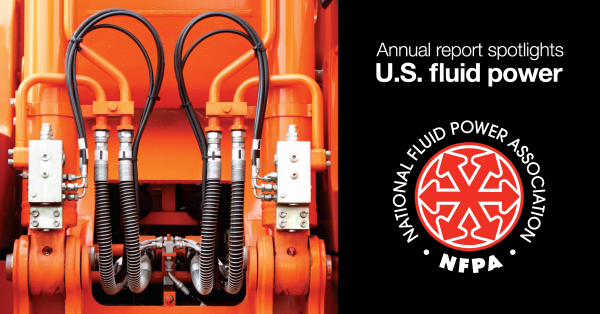Energy Efficient Fluid Power Discussed at Off-Road Vehicles Research Workshop
By Eric Lanke, NFPA President/CEO

I recently attended a workshop at the Argonne National Laboratory to discuss strategies for increasing the energy efficiency of off-road vehicles. The workshop was hosted by the U.S. Department of Energy (DOE) as part of its new $10 million research funding program dedicated to the same cause. I was joined there by more than 80 representatives of fluid power components manufacturers, fluid suppliers, OEMs, research universities, and other national labs. It was an impressive gathering!
The goals of the workshop were clearly laid out:
- Identify the barriers to cost-effective, high-efficiency off-road vehicles.
- Identify pre-competitive research topics that could have the biggest impact in overcoming barriers.
- Identify metrics that should be applied to program progress and ambitious, but realistic goals.
Fortunately for university and industry researchers in the fluid power industry, increasing the energy efficiency of fluid power systems was pre-identified as one of the barriers to cost-effective, high-efficiency off-road vehicles. The DOE has already awarded several multimillion-dollar grants in this research program to help solve some of fluid power’s efficiency challenges, and the workshop was the primary opportunity for NFPA and its partners to suggest directions for future funding awards.
I, in fact, moderated a breakout session on this very topic. After two hours of discussion, here’s the short list of recommendations that we came up with:
- Change system architectures to reduce parasitic and throttling losses. Those losses were seen as the biggest challenge to tackle, and several new system architectures were proposed for further investigation, including the integration of existing components, systems that could successfully decouple hydraulic pumps from engine speed and/or disable hydraulic work circuits when not in use, and “distributed” hydraulic systems, where individual pumps directly drove each work function when needed.
- Develop more efficient component technologies. There were lots of ideas discussed for design improvements to fluid power pumps, motors, and valves, including the further exploration of additive manufacturing and new materials for component prototyping and construction.
- Use “smart” technology to increase control and efficiency. The practical use of real-time feedback on component or fluid performance to drive more efficient system control was near the top of this list, with the acknowledgement that more inexpensive and reliable sensors would be needed to make such an objective possible.
- Develop and use advanced fluids that can increase energy efficiency. As hydraulic fluid becomes more and more technically advanced, the co-development of those fluids with the components that they will work with was seen as critical. Examinations of wear on traditional components could provide insights into the smart materials or coatings necessary to produce components better aligned with new low viscosity grade and high viscosity index fluids.
- Increase energy density of fluid power energy storage to facilitate cost-effective hybridization. Hydraulic accumulators beat electric batteries when it comes to power density, but not when it comes to energy density. To better close this gap, explorations into non-traditional energy storage technologies were recommended, as well as reductions in the size and weight of traditional accumulators.
Finally, there was a long discussion on the need for an objective way to measure the impact of any or all of these ideas on system efficiency. Knowing that the off-road vehicle market contains hundreds of vehicles with thousands of different duty cycles, the development of a standardized duty cycle was dismissed in favor of a few elementary metrics for systems, components and fluids that incorporate both steady state and dynamic conditions. For example, standardized metrics could be developed for torque and speed from rotary output in steady state, ramp up, and ramp down conditions. It was believed that such a set of metrics could allow the comparison of different architectures and components without linking it to a specific mission profile.
What the DOE decides to do with this input remains to be seen, but we are expecting a full report from the workshop by the end of the year, and, probably a broad agency announcement for new funded projects shortly thereafter.
All of this matters because it is through federal programs like this that the academic careers of fluid power faculty and graduate students can best be supported. These are the people who are and who will be teaching fluid power to the next several generations of undergraduate engineering students – students that our industry seeks to hire and whose fluid power skills will make or break the next several generations of fluid power products. NFPA played a role, but it was the Center for Compact and Efficient Fluid Power (CCEFP) that did the hard work necessary to get such a program launched within the DOE. The least we can do now is stay engaged and to help ensure that the available funding goes to industry-relevant projects.






